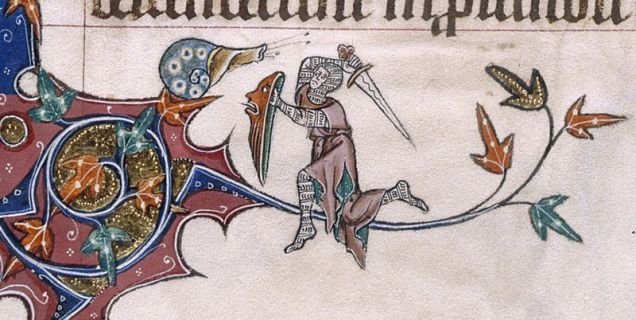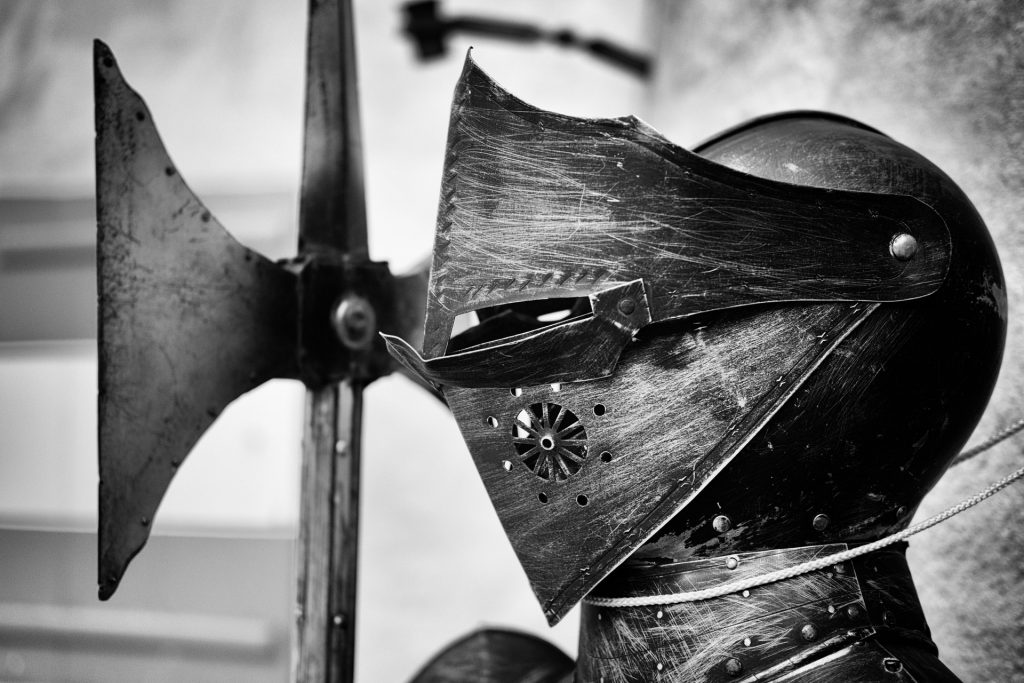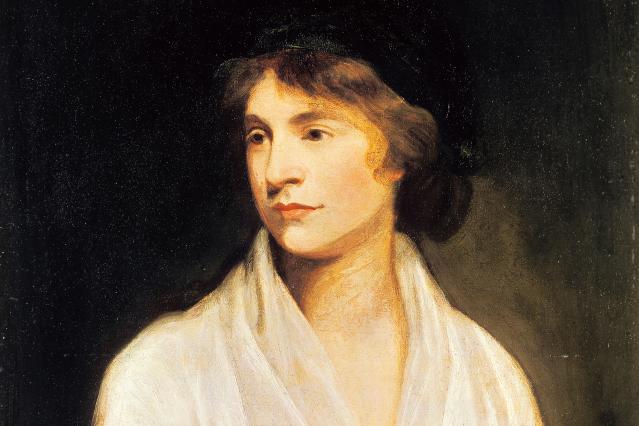Quirky Books In History: Why Are These Knights Battling Snails?
Medieval manuscripts are known for their beautiful illumination, aka the imaginative and colorful illustrations inside letters or in the margins. But have you ever taken a closer look at what these illustrations actually depict? There can be some bizarre-looking stuff happening in these pages. This ain't your typcial Renaissance Faire fare:
One of our personal favorites is a knight in full armor armed with a sword, spear, or mace attacking a snail with its eye stalks extended. Humorous, satirical, and profane illustrations began appearing in the margins of manuscripts created in northern France, Flanders, and England in the middle of the thirteenth century.

There are also several images of the snail defeating the knight, or the knight kneeling in front of the snail as if yielding to a formidable foe. The symbolical meaning of these images has been lost through the centuries. So technically speaking, we don't have a definitive answer. But some qualified guesses have been made:
During the Middle Ages, mostly negative traits were ascribed to the snail. It developed into a symbol of cowardice. The snail carries its house on its back like a thief, and therefore it was seen as a creature that couldn’t be trusted. The snail crawls on its belly, and because of that it was considered a coward and a parasite. Its ability to disappear into its shell was seen as feigning strength it didn’t have, and its ability to reappear made it seem like a social climber.

Another theory is that the snail also symbolizes the cowardice and dishonest behavior of the Lombards, a people from the northern part of the Italian peninsula. Lombards who moved to France, Flanders, and England made their living mainly as pawnbrokers. Combined with a story of their army’s cowardice during a battle against Charlemagne, the snail became the attributed satirical symbol of the Lombards. However, the problem with the snail specifically representing the Lombards is that the snail sometimes defeats the knight.
Another theory that has been brought forward to explain the knight battling the snail is that the snail would represent female sexuality. The fight against the snail would be a fight against temptation, a battle not always won.
Yet another suggested meaning of the knight fighting the snail is mankind’s struggle against our own mortality. The fact that the knight sometimes loses the fight has been interpreted as recognition of all life coming to an end. This suggestion is based on a reference to snails in Ps. 58 in The Book of Psalms. The problem with this interpretation is that Ps. 58 doesn’t deal with mortality but rather the vanquishing of wickedness in the world. Which brings us back to the snail as a disrespected animal.

In other words, the jury is still out on the exact meaning of these images. Why are these knights battling snails? Your guess could be as good as the academics!
Do you have quirky historical literature that needs investigating? Tweet it to us at @quirkbooks!




